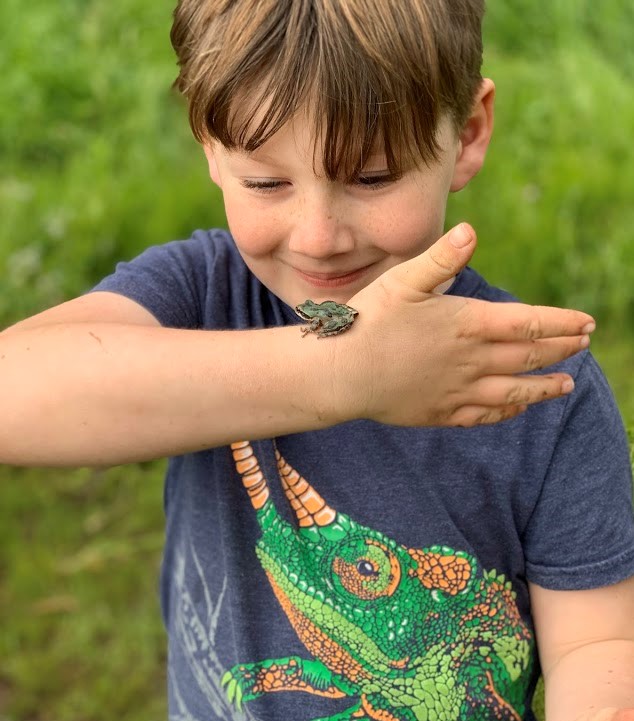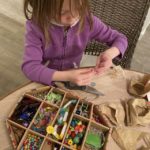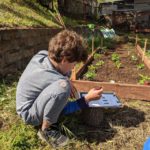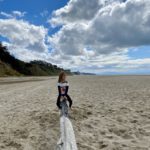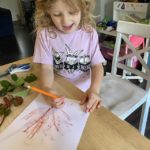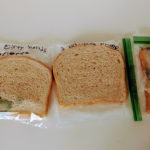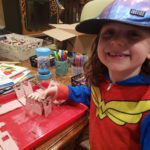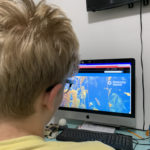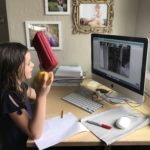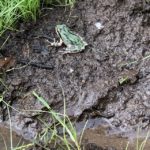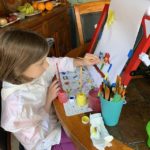 Faculty and Students Express a Deep Appreciation for Community Bonds
Faculty and Students Express a Deep Appreciation for Community Bonds
On March 27 Mount Madonna School (MMS) teachers and students completed their second week of remote teaching and learning. During this same period, MMS administrators and staff continued to work remotely to support the vibrant and beloved educational community.
“Our faculty and administration have worked diligently to learn to convert our curriculum into a virtual classroom environment,” commented Mount Madonna Head of School Supriya McDonald. “We appreciate their efforts and the challenges and opportunities online learning presents to students and parents. We are learning alongside our students and continuing to connect with one another through new avenues and platforms.”
MMS faculty members and students recently took time to reflect on this unprecedented moment in their professional – and personal – lives. Following, are a sampling of their observations.
From the Lower School
 “Preschool and kindergarten students are busy doing their lessons at home with their parents and getting outdoors to do various art projects. This week the children made their own nature mandalas and some shared pictures of their creations.” – Hema Walker, preschool/kindergarten director
“Preschool and kindergarten students are busy doing their lessons at home with their parents and getting outdoors to do various art projects. This week the children made their own nature mandalas and some shared pictures of their creations.” – Hema Walker, preschool/kindergarten director
“My primary objective has been to create as much continuity as possible for my students. What I found myself thinking a lot about was how to stay connected to my students and how to help them to feel connected to each other. Ideas swirled through my mind. I wanted to find a site where students could post videos and photos of projects they were doing/had done, and share their writing etc. I found a site that I really like that is very easy to use called Homeroom. I look forward, each day, to seeing what students post. Some use this site a lot and some not at all, but I like that it is there as an option for those that choose to use it. It’s almost like Facebook for the kids in my class (though without any public exposure).  Parents are posting curriculum-related information, sharing resources and pictures of the outdoor adventures they are having. It makes my day every time a student turns in a piece of work. I am appreciating, as well, the input from parents, such as submitting lesson plans the night before, so that parents can look them over while students are asleep.
Parents are posting curriculum-related information, sharing resources and pictures of the outdoor adventures they are having. It makes my day every time a student turns in a piece of work. I am appreciating, as well, the input from parents, such as submitting lesson plans the night before, so that parents can look them over while students are asleep.
“On day one, I wanted to make sure my students had plenty of options in all subject areas. By the end of the day, I realized I had offered too much, so the next day I cut back. It is hard to know the right amount to assign when you are not there to work with the students directly. By day three, I had simplified a lot to allow students to catch up or have a break. I continue to provide several optional categories on my lesson plans for students who are interested, and am stressing to parents to do as much, or little, as is manageable, as we all get into the rhythm of this new learning process.
 “Although we don’t ordinarily use technology resources in our first grade classroom, given the situation we find ourselves in, I am very grateful for opportunities to connect through Zoom (biweekly classroom meetings) and the Homeroom site. It helps me feel connected not just to the students, but to their learning and how they are engaging with their curriculum.” – Cassia Laffin, first grade teacher
“Although we don’t ordinarily use technology resources in our first grade classroom, given the situation we find ourselves in, I am very grateful for opportunities to connect through Zoom (biweekly classroom meetings) and the Homeroom site. It helps me feel connected not just to the students, but to their learning and how they are engaging with their curriculum.” – Cassia Laffin, first grade teacher
“During their time at home, second graders are writing and exchanging letters with their 12th grade buddies and creating a pen pal connection in the process. For the 12th graders, their participation in this activity is part of the child development curriculum of their Adulting 101 course.” – Prema Gammons, second grade teacher
“These past two weeks have been a whirlwind of change and challenges, but the students and parents are rolling with it really well. We are all learning new technology to stay connected and  support one another through this time. Google Classroom is our main mode of communication around classwork and everyone seems to be figuring it out. I am grateful to my students’ parents, who have been very supportive and patient within our class community.” – Kristin Webb, third grade teacher
support one another through this time. Google Classroom is our main mode of communication around classwork and everyone seems to be figuring it out. I am grateful to my students’ parents, who have been very supportive and patient within our class community.” – Kristin Webb, third grade teacher
“Students are logged onto Google Classroom, and I have uploaded journal assignments and slide show presentations for them to work on. We are in the process of scheduling weekly Zoom calls where I will teach new lessons and answer live questions. The kids seem to be really taking to this new digital format. They like commenting on each other’s posts and Google Classroom is helping them to build digital community skills.” – Nick Cabassa, fourth grade teacher
 “Fifth graders are busy learning! After spring break students will be contacting restaurants via phone or email to finish their single-use plastic reduction campaigns. They will also be writing letters and cards to their Pre/K little buddies one week and their ninth grade big buddies the next week. Fifth graders will be participating in the poster contest for Earth Day. We are working on figuring out a way to record students’ project presentation and share it remotely with the school community. We are also completing our educational movie through remote learning and will be recording voice overs via phone. Students will be sending me links to the pictures they want to use with their voice overs. After break students will use Zoom to start to share their Ocean Hero projects, have book discussions, and begin a poetry unit.” – Jessica Cambell, fifth grade teacher
“Fifth graders are busy learning! After spring break students will be contacting restaurants via phone or email to finish their single-use plastic reduction campaigns. They will also be writing letters and cards to their Pre/K little buddies one week and their ninth grade big buddies the next week. Fifth graders will be participating in the poster contest for Earth Day. We are working on figuring out a way to record students’ project presentation and share it remotely with the school community. We are also completing our educational movie through remote learning and will be recording voice overs via phone. Students will be sending me links to the pictures they want to use with their voice overs. After break students will use Zoom to start to share their Ocean Hero projects, have book discussions, and begin a poetry unit.” – Jessica Cambell, fifth grade teacher
From the Upper School
 “As a parent and teacher, this has been a very challenging and interesting experience navigating screen time and sharing space in the home, so that each member of the family can complete their daily school tasks. We have had, like all, a huge shift in our schedules and how we interact with our students. We have become dependent on technology to be the foundation of our interactions, while our patience and trust in the process is tested. The underlying beauty is that we have all pulled back the curtain and almost immediately become aware of the deep appreciation and love for our roles and our bonds within our school community. Students comment with us teachers daily on how they miss their regular school environment, and yet are learning so much about time management, independent study and the value of hard work and organization. Our online classes have held space for students to not just continue the format of academic learning but have provided a time for quality social emotional check-ins and support for all of us during this time I believe this will ultimately strengthen our community bonds as we all are all in this together.” – Sara Sobkoviak, eighth-12th grade Spanish, high school track and field coach, MMS board of directors
“As a parent and teacher, this has been a very challenging and interesting experience navigating screen time and sharing space in the home, so that each member of the family can complete their daily school tasks. We have had, like all, a huge shift in our schedules and how we interact with our students. We have become dependent on technology to be the foundation of our interactions, while our patience and trust in the process is tested. The underlying beauty is that we have all pulled back the curtain and almost immediately become aware of the deep appreciation and love for our roles and our bonds within our school community. Students comment with us teachers daily on how they miss their regular school environment, and yet are learning so much about time management, independent study and the value of hard work and organization. Our online classes have held space for students to not just continue the format of academic learning but have provided a time for quality social emotional check-ins and support for all of us during this time I believe this will ultimately strengthen our community bonds as we all are all in this together.” – Sara Sobkoviak, eighth-12th grade Spanish, high school track and field coach, MMS board of directors
“At the end of the first week of remote learning, I posted a discussion forum question asking my high school students to reflect on what was working or positive for them being home now, and what were some challenges or concerns. Following is a list collected from a random group of 10th-12th graders.” – Tiffany Wayne, high school social studies and English teacher
- getting better at navigating email and online communication
- being in charge of my own schedule
- getting school work done in shorter time and having more time for hobbies
- spending more time outside in nature
- spending more time with family / siblings
- sleeping more and feeling more rested
- exercising more (walking, running)
- working on hobbies never had time for: art, music, reading, embroidery, baking, video games, riding a horse, learning Italian
CONS:
- difficulty keeping up with too many classes and teachers online
- bad internet service for keeping up with classes
- too much screen time (computer, phone, TV)
- eating out of boredom
- lack of structure / time management
- not being able to talk to teachers directly, in real time
- no volleyball
- no college visits
- missing friends
- missing out on end-of-school-year activities
- worrying about the future
 “My favorite remote lesson so far is having my students in oceanography prepare for a real-world field study of animal behavior using the webcam in the kelp forest at the Monterey Bay Aquarium. They prepared data tables of fish behaviors, and we will be observing the webcam together on Zoom so that I can guide them through what they are looking for, such as ‘fin displays’ and ‘station holding.’ At the Wrigley Institute for Environmental Studies and Marine Science Center on Catalina Island, they will be doing this on clipboards underwater under the guidance of a graduate researcher who will use their data, and this is actually a great way to prepare! It’s something I’m likely to use again in an in-person setting next year, and I would not have discovered it if we were not being forced by this situation to be resourceful about online learning.
“My favorite remote lesson so far is having my students in oceanography prepare for a real-world field study of animal behavior using the webcam in the kelp forest at the Monterey Bay Aquarium. They prepared data tables of fish behaviors, and we will be observing the webcam together on Zoom so that I can guide them through what they are looking for, such as ‘fin displays’ and ‘station holding.’ At the Wrigley Institute for Environmental Studies and Marine Science Center on Catalina Island, they will be doing this on clipboards underwater under the guidance of a graduate researcher who will use their data, and this is actually a great way to prepare! It’s something I’m likely to use again in an in-person setting next year, and I would not have discovered it if we were not being forced by this situation to be resourceful about online learning.
 “What I like about the online format is that every student is sitting at the front of the room. It levels the playing field somewhat by removing the distractions of clandestine social engagement during direct instruction. My students state that they miss the community feel and the fun moments of being together during the day, and I certainly agree with them there! Another positive about what we are doing now is that a lot of online learning resources have been made available for free to schools affected by shelter-in-place orders. For example, my students in chemistry are able to review at home using a graphically rich online game environment. It’s not something I might have invested in if we were able to be in a classroom together, and it was also very pricey. It’s nice that they can access resources like this for free.” – Lisa Catterall, middle and high school math and science
“What I like about the online format is that every student is sitting at the front of the room. It levels the playing field somewhat by removing the distractions of clandestine social engagement during direct instruction. My students state that they miss the community feel and the fun moments of being together during the day, and I certainly agree with them there! Another positive about what we are doing now is that a lot of online learning resources have been made available for free to schools affected by shelter-in-place orders. For example, my students in chemistry are able to review at home using a graphically rich online game environment. It’s not something I might have invested in if we were able to be in a classroom together, and it was also very pricey. It’s nice that they can access resources like this for free.” – Lisa Catterall, middle and high school math and science
###
Contact: Leigh Ann Clifton, director of marketing & communication,
Nestled among the redwoods on 375 acres, Mount Madonna School (MMS) is a community of learners dedicated to creative, intellectual, and ethical growth. MMS supports its students in becoming caring, self-aware, discerning and articulate individuals; and believe a fulfilling life includes personal accomplishments, meaningful relationships and service to society. The CAIS and WASC accredited program emphasizes academic excellence, creative self-expression and positive character development. Located on Summit Road between Gilroy and Watsonville. Founded in 1979.

